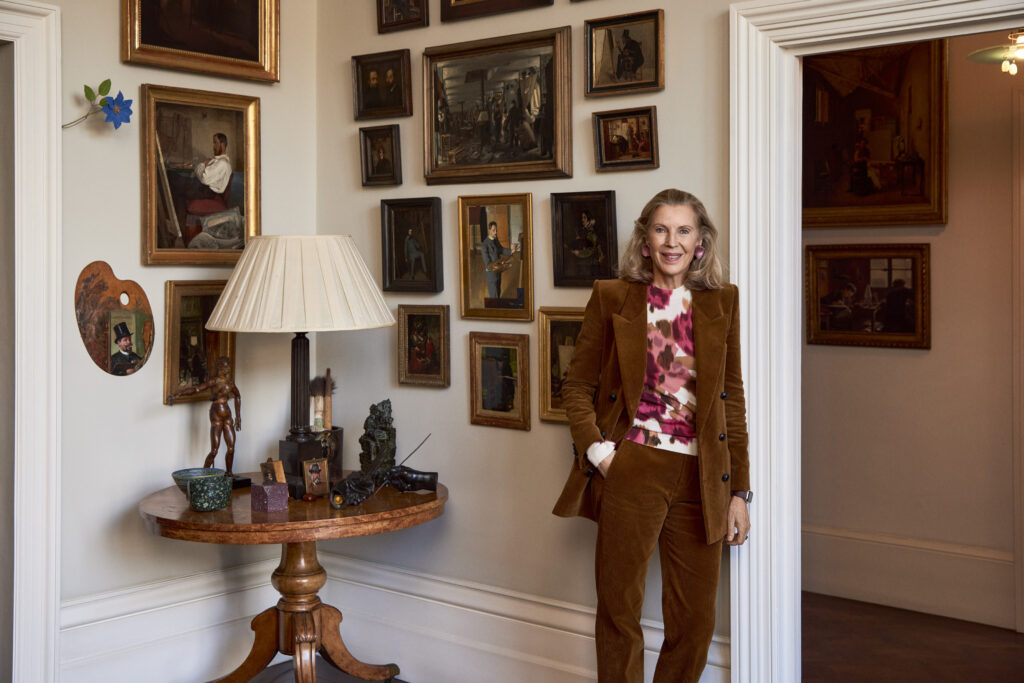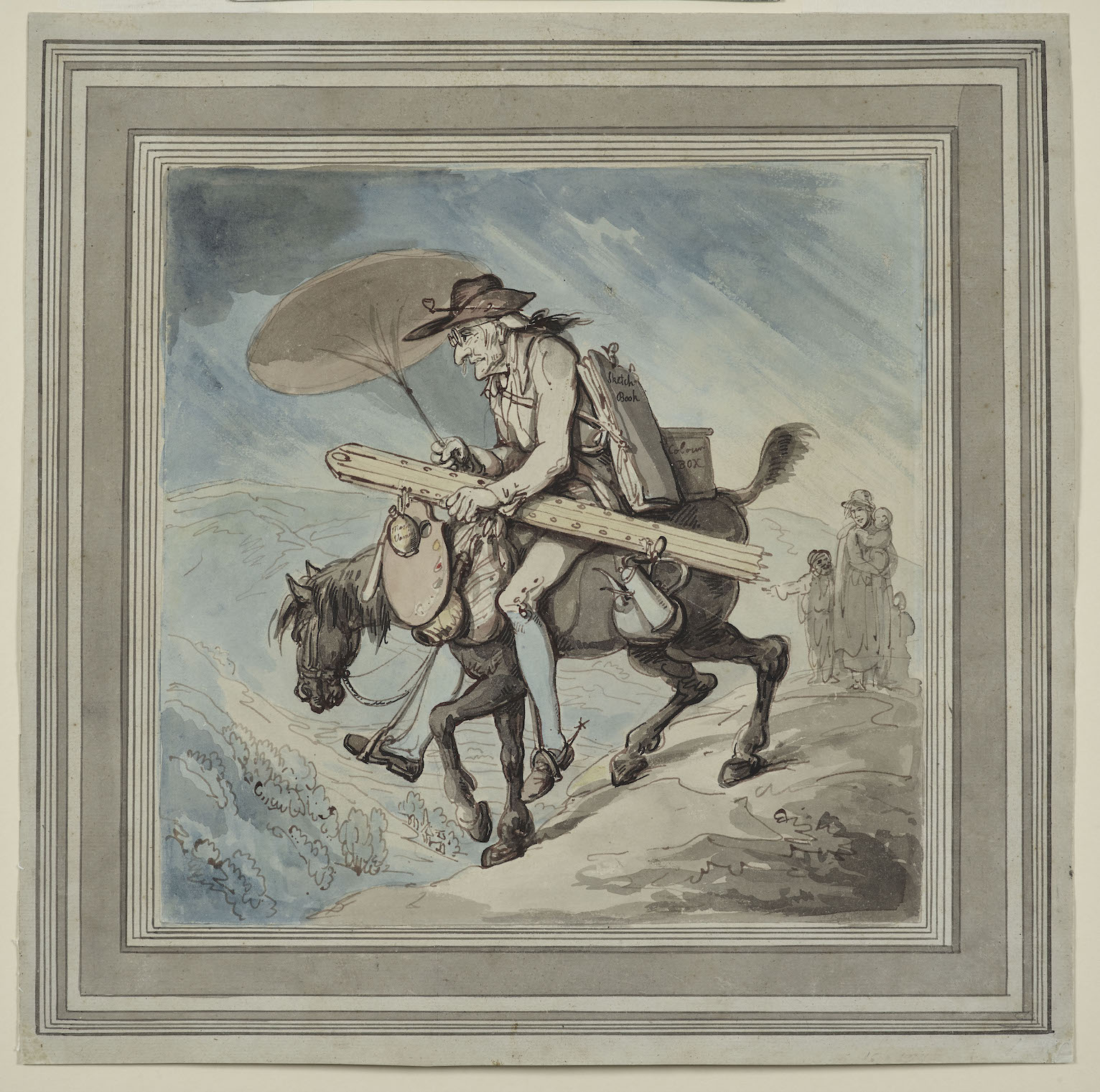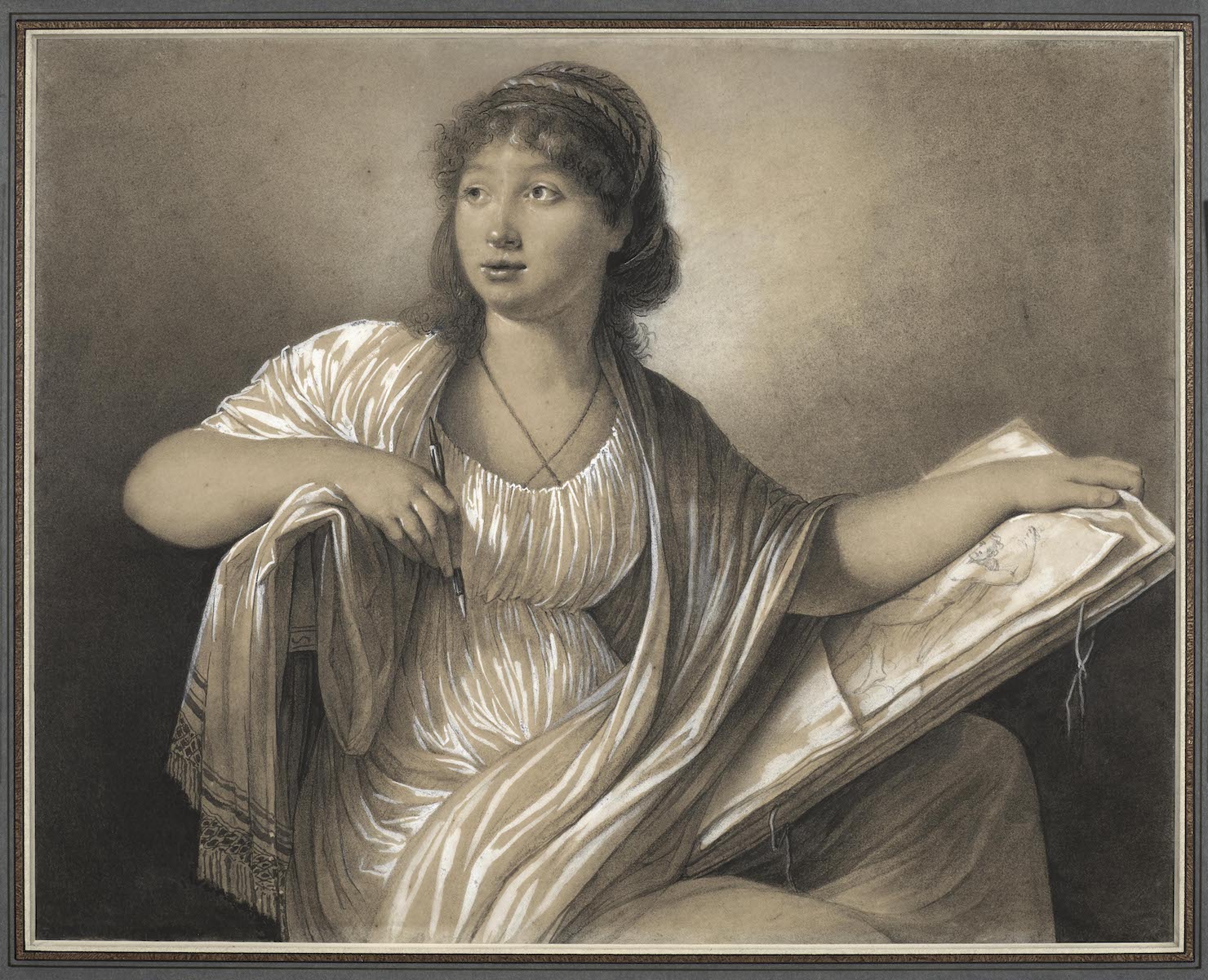“Giving Women the Visibility They Deserve”
Collectors Interview: Katrin Bellinger

Katrin Bellinger describes herself as a born collector. The art professional has turned her passion into a profession and traded in old master drawings for 30 years. Today, Bellinger, who grew up in Cologne, Germany, and lives in London, UK, has many obligations, such as being on the board of the National Gallery and the Tate. But most of her time she devotes to her extensive collection of works on paper, which concentrates on the subject of ‘artists at work’. In an interview with viennacontemporaryMag, she explains why a unifying theme can be a valuable asset for any collection and why she is currently mainly buying contemporary art by women.
Did you enter the art world through your profession or as a collector?
I believe an affinity for collecting is something you are born with. Even as a child, I had this passion for collecting, and to this day I bring everything I find home with me. My apartment looks like a museum. I could buy anything at trade fairs, from antiques to ethnographic items. At some point, you can’t afford to always just buy, so I started selling. So the art trade and collecting always went hand in hand. I was particularly fascinated by drawings, perhaps because I wanted to become an artist myself in my youth.
Your collection revolves around “artists at work.” Why did you choose this theme in particular?
When you trade in something you also collect, it quickly leads to a conflict of interest. So I chose to focus on drawings and this particular topic. It’s beautifully broad: the artist in the studio, in the academy, in the landscape, the tools… I’m fascinated by the artistic process, especially the training of artists over the centuries interests me. In the past, you had to master drawing from plaster models before you were allowed to work from live models. Antiquity was considered the ideal, only then came the human body, which was full of flaws. I find the strict regimen exciting, which was destroyed only in the 19th century, this rebellion against rigid training.
Celia Paul (Thiruvananthapuram 1959), Artist in her Studio (with man painted out), 2020
What advantages do you observe in pursuing a thematic focus?
On one hand, you can collect so many different media – drawings, prints, paintings, photographs. On the other hand, you can build up a valuable collection at a comparatively low cost, as you can find something for very little money that has a lot of worth within the collection. I could never focus on just a few great masters. If I don’t buy any art for a few weeks, I get depressed (laughs).
You also find sub-themes within the large collection…
We recently had an exhibition in Dresden, Germany, called ‘Connecting Worlds: Artists & Travel,’ in which 100 works on the subject were shown, some from the Kupferstich-Kabinett collection and some on loan. For the selection from my collection, I sat down with the curator Stephanie Buck from Dresden. It’s always very interesting to see what curators, or artists in particular, choose. This also gives you a completely new perspective on your collection.
Does it unsettle you when your precious possessions tour around the world? I’m never worried, but when I recently contributed a portrait of the artist Felicien Rops to an exhibition in Hamburg, I missed it, of course. A group of drawings recently went to an exhibition about historical women artists in Baltimore, USA, and suddenly my entire wall was empty. But really, I’m always happy when my work is open to the public. Those collectors, who sit alone in the basement with their art, do they really exist? Me, I collect to share.
ANNE GUÉRET (Paris 1760 – 1805 Paris), PORTRAIT OF A FEMALE ARTIST WITH A PORTFOLIO (SELF-PORTRAIT?), 1793?
You are particularly known for collecting female old masters, what an exciting topic. Is it easy to find them?
A career as a painter was not open to women; they were usually trained in their father’s or brother’s studio as they had no access to academies. Like singing, knitting, and playing music, drawing was accepted – but you weren’t allowed to be too good. As soon as the art was too professional, it was frowned upon. Although the historical female artists are currently being reappraised – Paris Spiess Ganz has just published a great book on the subject – it is very difficult to find works by them. That’s why, three years ago, I expanded my collection to include contemporary women artists – to create a balance in retrospect and give women the visibility they deserve. Better later than never.
How do you go about expanding your collection with contemporary art?
After all, the process of discovering is quite a different one, isn’t it? I rely on specialist expertise in the field, just as people consult with me in my field of expertise in Old Masters. I worked with Katie Hessel, for example, who is incredibly committed and drew my attention to suitable works. This resulted in some good pieces such as a Celia Paul painting as well as pastel works by Eileen Cooper and Chantal Joffe. As they often portray themselves, they fit in well with the theme of the collection. Engaging with living artists is great fun. Many also visit me to check out my collection, and more often than not they react to the works and overall theme in their practice. Incidentally, I don’t only collect women: Pablo Bronstein was here recently, as was Ali Kazim, whose work I adore.

Ali Kazim (Pattoki 1979), Untitled (Mara’s Army I), 2022
It must be nice to get the chance to meet the artists behind the works for a change.
Sometimes it makes buying art more complex and complicated. I’m generally a proponent of separating the work from the person behind it – but once you know the person, it’s more difficult. On the other hand, it helps you understand the work better. Celia Paul, for example, is just as deliberate as her works. And I love that in contemporary art you can ask questions. I would love to be able to do that with my old masters (laughs). What does a contemporary art piece have to bring to the table for you to buy it? Because of the collection’s theme, it should be figurative. It also has to appeal to me on a personal level, to trigger that “Oh, I MUST have that!” feeling known to all collectors. I’ve also always bought contemporary art outside my theme, but I wouldn’t call it collecting. I grew up in Cologne in the 70s and 80s, and my husband and I bought Baselitz, Immendorff, and Penck – all these people I knew personally.
Do you feel artists and collectors should know the old masters to find their way around contemporary art?
You don’t have to know art history by heart, but you should never look at art in isolation. If you start by looking at it, your curiosity will naturally develop and you will want to know more and be able to place it in its historical context. But generally, I am impressed by how well artists know art history and are inspired by it.
Do you know all the 1,800 or so works in your collection by heart?
I have a database that I can look up (laughs), but especially the drawings I know very well. Most of the works are stored in a print room that offers the right conditions. I like to share my collection, so I’ve set it up to fit up to ten people. I get two or three visits a week – often from students, academics, or research groups to look at and discuss the collection.

Thomas Rowlandson (London 1756 – 1827 London) An Artist Travelling in Wales, 1797
So your collection is a meeting point for intellectual exchange?
It is best when people come who know more than me, then I learn something. Drawings are a difficult area; they are rarely signed, and you often face problems attributing them correctly. For a dealer, anonymous artworks are difficult, but as a collector, I love them! Nothing is better than being able to talk your head off about a piece. I have so many works where I’m constantly fiddling around with what they could be. We keep a record of who suggests what and have often found out new information. That’s what is very special about my field and why my heart is attached to the old masters. I just love the process of research and exchange. This detective work fascinates me. Do you ever get it wrong? Of course, mistakes can happen. At the very beginning, I bought a drawing only to later discover in an old catalog that it was part of a larger drawing. An Italian dealer had simply cut it in half and sold it as two pieces! Drawing is not an easy field – but when you make a discovery, this feeling is amazing.
Which discovery are you particularly proud of?
I recently found a drawing in Paris depicting a female painter at an easel that was attributed to Jean-Étienne Liotard, a wonderful 18th-century artist who typically worked with black, red, and white chalk. On closer inspection, however, I realized that it must be a self-portrait of the artist. The drawing hand is difficult to depict since it is constantly moving, and the artist in the drawing had shaded it out to correct it. I see something like that, but the auction house didn’t notice it. I bought it because I think it’s important to show how much women artists had to struggle because of not having any access to education.


